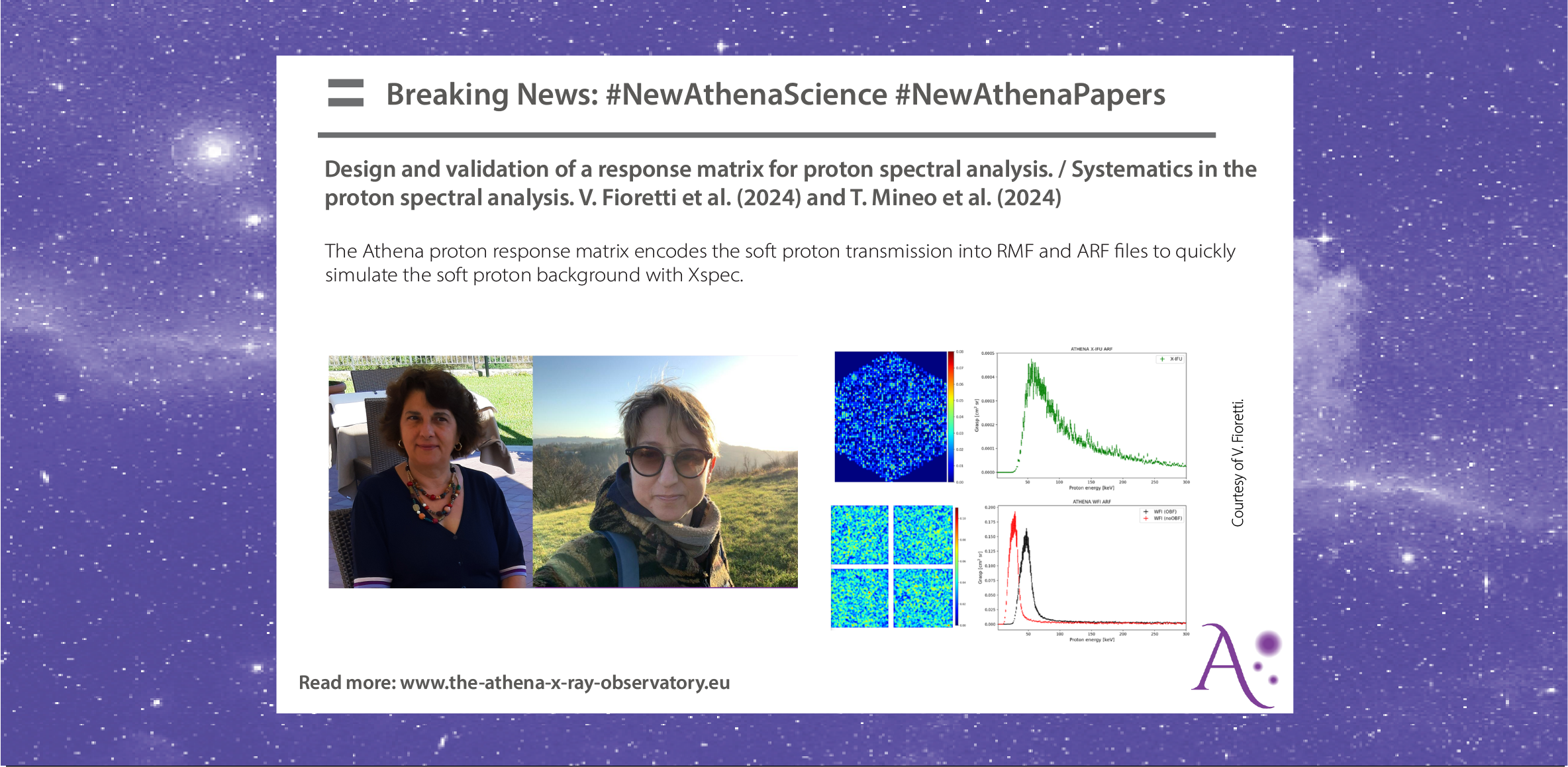

Caption (inset figure): The Athena X-IFU and WFI count map induced by 50 keV protons (left) and the proton grasp (right) encoded in the ARF FITS file.
By V. Fioretti and T. Mineo
Soft proton flares are sudden increases in the background caused by low energy protons (<300 keV) populating the interplanetary space and the magnetosphere outside the radiation belts, including the Earth’s magnetotail. Scattering on the X-ray mirror surface of focusing telescopes, they are reflected to the focal plane instruments, causing energy deposits that can hardly be disentangled from true X-ray events. In XMM-Newton, operating in elliptical orbit, they can prevail over the quiescent background level up to 1000%, lasting from ∼100 seconds to hours and losing up to 40% of observing time.
Because of its unprecedented effective area and a planned orbit in L1, outside the shielding provided by the Earth’s magnetic field, NewAthena requires a dedicated assessment of the contamination by soft protons to design shielding solutions such as a magnetic diverter. In-flight XMM-Newton’s observations of soft protons represent a unique laboratory to validate and improve our understanding of their interaction with the mirror, optical filters, and X-ray instruments. At the same time, such models would link the observed background flares to the primary proton population encountered by the telescope, converting XMM-Newton into a monitor for soft protons.
We built a verified end-to-end Geant4 simulation of the proton transmission in XMM-Newton, from the scattering with the X-ray mirror to the final absorption in the EPIC CCDs. The resulting energy redistribution and proton grasp are encoded into standard RMF and ARF response files. We analysed, using the NASA Xspec fitting package, averaged MOS proton spectra from the EXTraS archive and a sample of 55 MOS and pn in-flight spectra obtained at different solar and orbital conditions. Within an overall uncertainty of 30% for the proton response files, the resulting best-fit model for the proton environment agrees with independent predictions, validating the proton scattering simulations used to predict the impact of the focused non-X-ray background on NewAthena and the design of its magnetic diverter. Furthermore, the work pointed out that laboratory measurements on the proton transmission through the optics and filters would be useful for improving the matrices.
Using the same Geant4 simulation pipeline but applied to the old Athena mission design, we built the proton response matrix for the WFI and X-IFU detectors to provide a quick evaluation of the soft proton-induced background level – without magnetic diverter - using just Xspec.
Access to the manuscript in: V. Fioretti and T. Mineo

